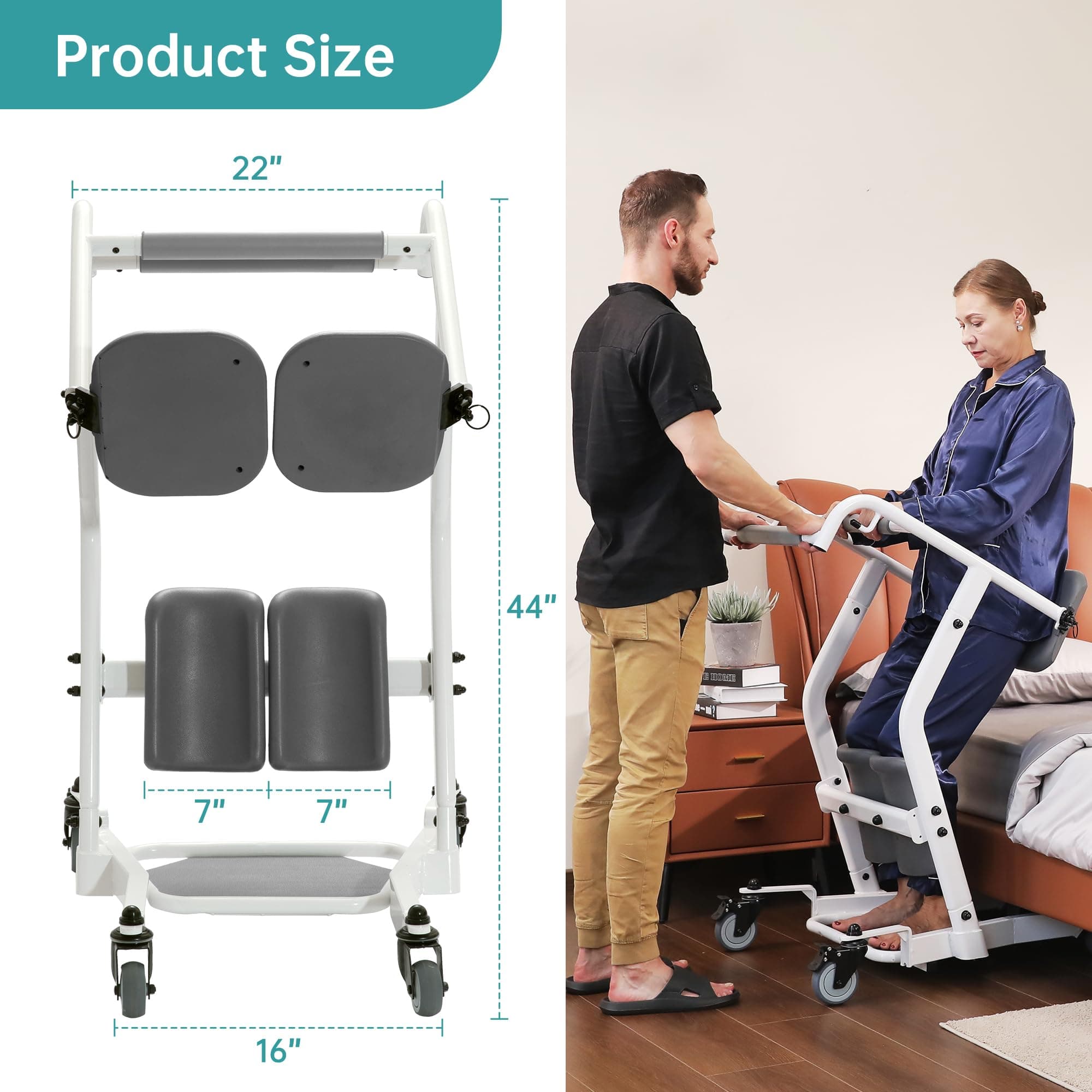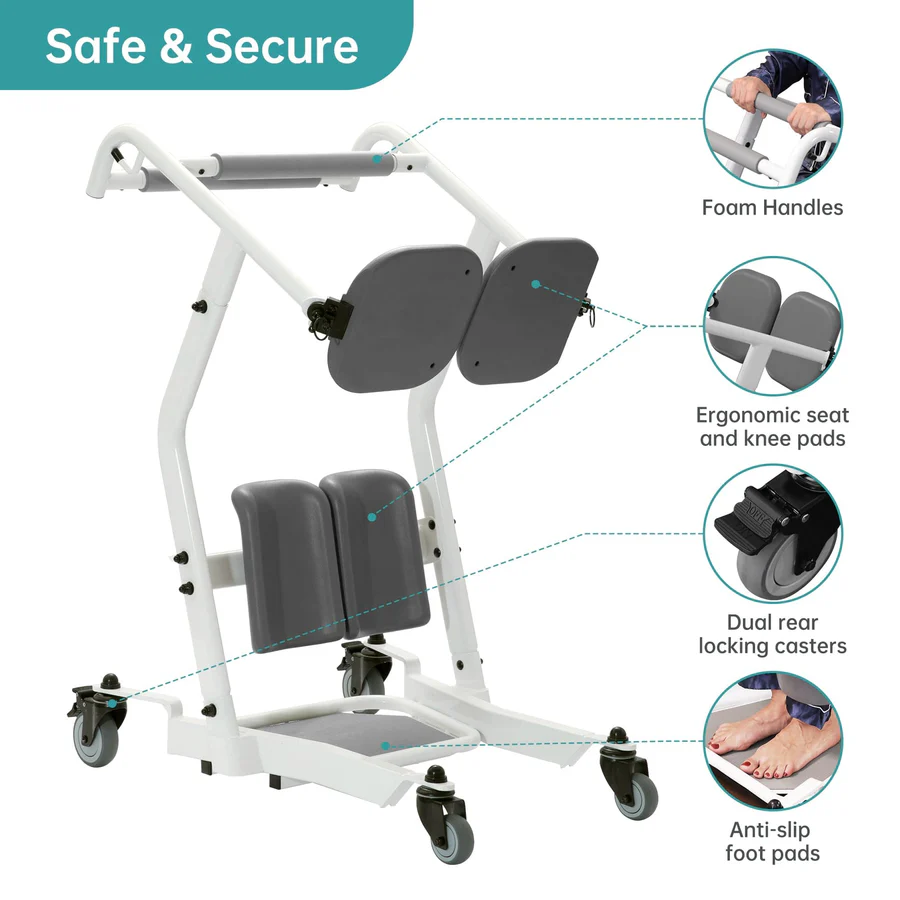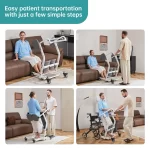If you’ve ever tried to help someone move from a bed to a chair or get them on their feet after sitting for a while, you know it’s not always as simple as it sounds. That’s where sit-to-stand lifts come in. These helpful devices give folks the boost they need to stand up safely—with less strain on caregivers, and a lot more dignity for the person being assisted.
But who exactly should be using a sit-to-stand lift? It’s not just for hospitals or nursing homes. Let’s talk through it—real-life situations, who benefits the most, and what makes someone a good fit for this kind of lift.
It’s All About That Middle Ground
Not everyone needs full-body lifting help. And not everyone can stand up completely on their own. Sit-to-stand lifts are made for that “in-between” group—people who still have some leg strength, but not enough to stand on their own safely.
They’re great for helping with transfers—think: from bed to wheelchair, wheelchair to toilet, or chair to chair. The idea is to support the person’s upper body and legs just enough so they can rise to a standing position, pivot, and sit back down somewhere else.
People with Limited Mobility (But Not Completely Immobile)
Sit-to-stand lifts are a solid choice for people dealing with limited mobility from things like:
- Stroke recovery
- Parkinson’s disease
- Multiple sclerosis
- Recent surgery (like hip or knee replacement)
- General muscle weakness from aging
- Diabetes-related complications that make standing tough

The key here is that the person needs to be able to participate a little bit in the transfer. They should be able to support some of their own weight (even if just for a few seconds), and follow simple instructions like “hold on here” or “lean forward.”
Ideal for Seniors Who Tire Easily
For a lot of older adults, standing up and sitting down takes a lot of energy. Even if they can do it on their own in the morning, by evening they’re wiped. A sit-to-stand lift can help take some of that effort off their plate and reduce the risk of falls when they’re feeling weak or wobbly.
It’s also helpful for seniors who deal with stiffness, joint pain, or balance problems. Instead of struggling every time they need to move from one place to another, they can feel supported and secure.
Helpful for People with Obesity
When someone is heavier, standing up from a low seat or narrow toilet can be a real challenge. A sit-to-stand lift gives both the user and the caregiver peace of mind. There’s less risk of injury for both parties, and the process becomes way smoother—and safer.
There are bariatric sit-to-stand lifts designed specifically to handle higher weight capacities, wider frames, and extra-sturdy slings. So no matter your body size, there’s likely a lift that’ll make transfers easier and more comfortable.
Caregivers: This One’s for You, Too
If you’re a caregiver—professional or family—you already know how much effort goes into even the simplest transfers. Constantly bending, lifting, bracing—it’s a workout. Over time, that strain adds up and can lead to back injuries or burnout.
A sit-to-stand lift helps protect caregivers by doing the heavy lifting—literally. It reduces physical stress, makes transfers smoother, and can even speed up daily routines like toileting or dressing. If you’re helping someone who still has a little leg strength but needs support, this tool can be a huge win for both of you.

People Who Want to Stay at Home Longer
For folks who want to age in place or avoid moving into assisted living, having the right mobility equipment at home is crucial. A sit-to-stand lift can make home care more manageable, even if someone has complex health needs. It gives a boost of independence, and makes it easier for family caregivers to provide hands-on help without calling in extra support.
Paired with a wheelchair, bedside commode, or walker, it becomes part of a full setup that keeps people safer and more comfortable at home.
When Not to Use a Sit-to-Stand Lift
It’s just as important to know when a sit-to-stand lift isn’t the right choice.
- If someone can’t bear any weight at all, even for a second, this lift may not be safe.
- If they can’t follow basic directions (due to severe dementia or confusion), it can make the transfer dangerous.
- And if the person has severe joint pain or contractures that make it painful to stand, a full-body lift might be a better option.
Always check with a healthcare provider or physical therapist before choosing any kind of mobility device.
Signs It Might Be Time to Get One
Still unsure if it’s time to bring a sit-to-stand lift into the picture? Here are a few signs to look for:
- Struggling more often to help someone stand up
- Increased risk of falls during transfers
- Caregivers experiencing pain or fatigue from lifting
- The person can stand briefly but needs help to stay steady
- You want a safer way to assist with toileting or daily hygiene
If you nodded “yes” to any of those, it might be worth looking into a lift.
Sit-to-stand lifts aren’t just clinical equipment—they’re everyday tools that make life easier for both users and caregivers. Whether it’s an aging parent who needs a bit of support or a patient recovering from surgery, this kind of lift bridges the gap between full independence and full assistance.
Choosing the right time to bring one in can improve safety, reduce stress and help someone stay active and comfortable—without turning every transfer into a struggle.
Got someone in mind who could benefit from one? It might be time to take that next step.

